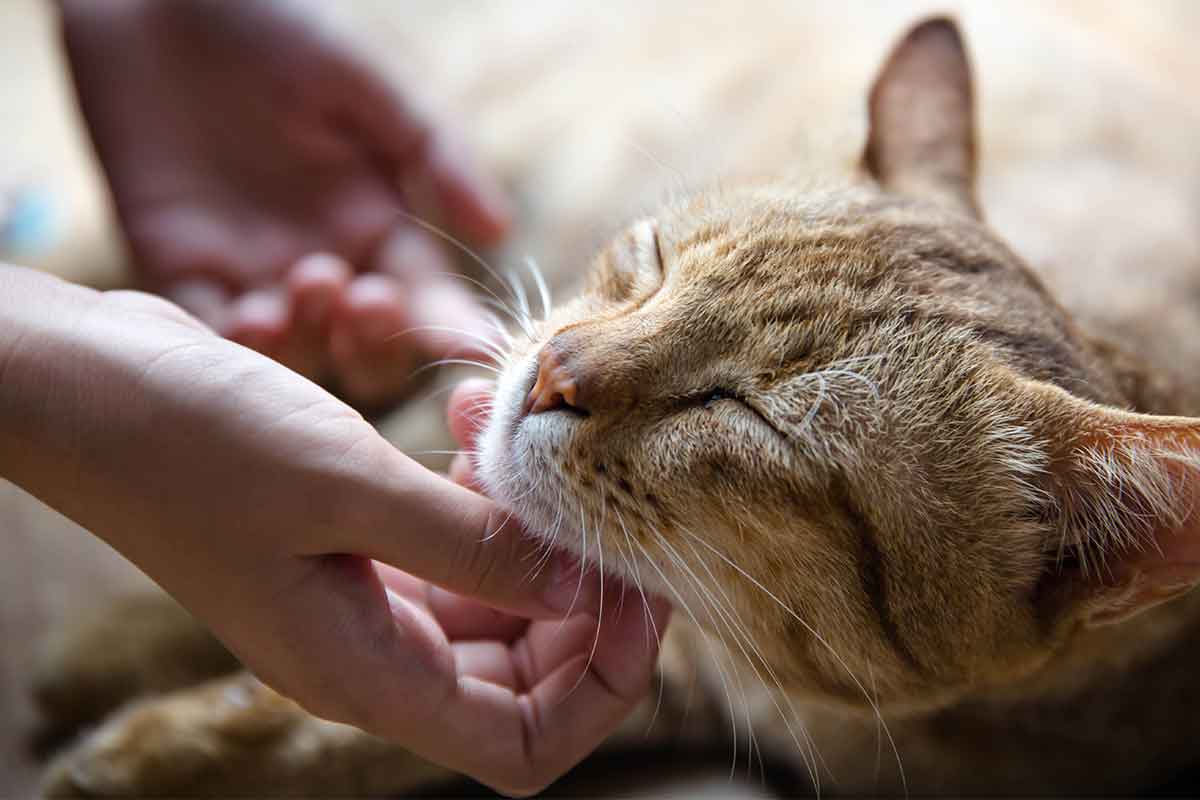When I was in college, several members of the football team lived in my dorm. I’m five feet tall, and whenever I walked down their hallway, one of those huge guys would pick me up, give me a big hug, and tell me how cute and tiny I was. I know they didn’t intend to be mean, but I hated being randomly grabbed and lifted right off my feet, and I avoided that hallway whenever I could.
Imagine how your cat feels.
Being picked up and smushed into a hug is a stress trigger for cats. Cats are super predators, but they’re also prey animals. The first thing a giant predator does when it grabs something to eat is restrain it. That’s what cats do to mice, and it’s what it feels like you’re doing when you grab and hold a cat. Cats are naturally cautious, and they like to keep all four paws on a solid surface, so they can always leap away.
Understanding this is key to living happily with a cat. In fact, the more you let your cat decide when, where, and how physical affection will happen, the more he’ll give you. Cats are often more likely to approach us for affection, and to hang around longer, when we let them make the first move.
“Ask” First
Like us, cats prefer that we ask if it’s okay before we touch. Felines who are friends greet each other by touching noses. A human head is too big to really mimic that behavior, but a human fingertip is just about the size of that adorable triangle of skin at the tip of a cat’s nose. We can gently offer a fingertip at their nose level, a few inches away, as a way to ask politely, “May I pet you?”
Some cats will say no by walking away. Some may approach but then sit down with a bit of space between you—a way of saying, “I’m curious, but no touching yet.” No matter how adorable the cat, we need to respect those limits. Many cats will walk up and sniff your finger, and may even rub into it. That’s the invitation for petting.
Watch And Learn
Where you pet a cat matters—a lot. If you were visiting a country with a totally unfamiliar culture, you’d watch where and how the people touch each other to figure out what is and is not considered polite. When we do the same with cats, we find that they lick and touch each other around the cheeks, forehead, back of the neck, and shoulders. They always follow the grain of the fur in friendly interactions, too—no rubbing the wrong way.
A couple of studies have found that cats showed more positive responses to their humans—things such as purring, blinking, and kneading their paws—when they were petted on the forehead area and the cheeks. Clearly, we can’t go wrong when we follow feline etiquette.
What about that spot at the base of the tail, the one that causes some cats to lift their butt in the air? The petting studies suggest that’s actually not a favorite spot for many cats. Cats who do like it show you very clearly by lifting their behind. If your cat is not raising his butt for more, he’s one of the many who don’t care for that sort of thing.
Even when a cat says okay to touch, we’ve all had that experience where we’re petting a cat and it’s bliss, bliss, bliss—and then suddenly swat! It seems like it all changed in a nanosecond. Cats do have issues when it comes to being touched, and they get overloaded pretty quickly. But not as quickly as we might think. That swat is usually preceded by more subtle signals that we might miss.
How a cat communicates that he’s had enough varies for each individual. But signs of overstimulation include the following:
- Skin over the shoulders stiffens or ripples
- Whiskers come forward
- Ears flick back, sideways, or flat
- Tail flicks or lashes
- Skin twitches
- Pupils become slitted or very dilated
- Claws come out (other than kneading)
- A paw is raised
- Vocalization (other than purring)
If you see any one of those signs, stop petting. If your cat chooses to remain beside you (because you have been so polite), wait a few minutes before you start petting again. Meanwhile, just keep your hands to yourself.
Of course, every cat is an individual with his own preferences. The best way to pet your cat is just the way he likes it. Pay close attention to his body language, observe the feline rules of politeness, and you’ll both be enjoying more cuddle time.
This article was reviewed/edited by board-certified veterinary behaviorist Dr. Kenneth Martin and/or veterinary technician specialist in behavior Debbie Martin, LVT.
Beth Adelman, MS, is a cat behavior consultant in New York City. Beth is currently on the executive committee of the feline division of the Pet Professional Guild, and is a frequent speaker on cat behavior.








